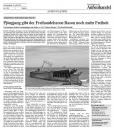According to Yonhap:
South Korea has agreed to raise the minimum monthly wage for North Korean workers by 5 percent at the two countries’ joint factory park in the communist state, an official said Friday.
The latest increase, which was agreed to Thursday and will be effective over the next year, is in line with the 5 percent annual hike in the preceding three years, Unification Ministry spokesman Chun Hae-sung said in a briefing, adding the minimum wage for North Korean workers now stands at US$60.775.
North Korea has demanded wage hikes for its workers in the border town of Kaesong since early this year. About 120 South Korean firms operate there, employing 44,000 North Korean workers to mainly produce labor-intensive goods. The estate has been considered the last remaining symbol of reconciliation between the sides that remain technically at war.
“Our companies agreed to allow the increase, and we have also agreed it would be appropriate to increase the minimum wage by 5 percent, after hearing opinions from the firms,” Chun said.
Under an agreement with North Korea, South Korea may increase the minimum wage by up to 5 percent each year. The new raise will be effective for one year starting Aug. 1, Chun said.
The increase comes as tension simmers between the two countries, which fought the 1950-53 Korean War that ended in a truce that has never been replaced by a peace treaty.
…South Korea has halved the number of its nationals staying in Kaesong due to safety concerns since May, when it warned it would not tolerate any North Korean threat or harm to them.
The Kaesong complex began operating in 2004 after being agreed upon by the leaders of the Koreas in a summit four years earlier. The companies there have expressed concerns that the erosion in inter-Korean relations was affecting their businesses, calling for eased regulations on their operations.
Yonhap does not mention that nearly all of the wages paid to Kaesong workers are deposited with the North Korean government.
UPDATE via the Daily NK:
In addition to the wage rise, the spokesman also announced measures to combat a concern of the companies in the Complex; that of autonomy over staffing decisions.
“Every company contains North Korean workers’ representatives, and these representatives have tended to mastermind changes to work team arrangements as they saw fit,” the spokesman explained.
However, he went on, “We have added measures so that, in future, workers’ representatives will not be involved in this area, and workers will be organized according to the independent judgment of the companies.”
So it appears that the DPRK did not simply win a unilateral pay increase. South Korean firms apparently gained some managerial control as well.
Read the full story here:
S. Korea agrees to pay raise for N. Korean workers at joint complex
Yonhap
Sam Kim
8/6/2010

